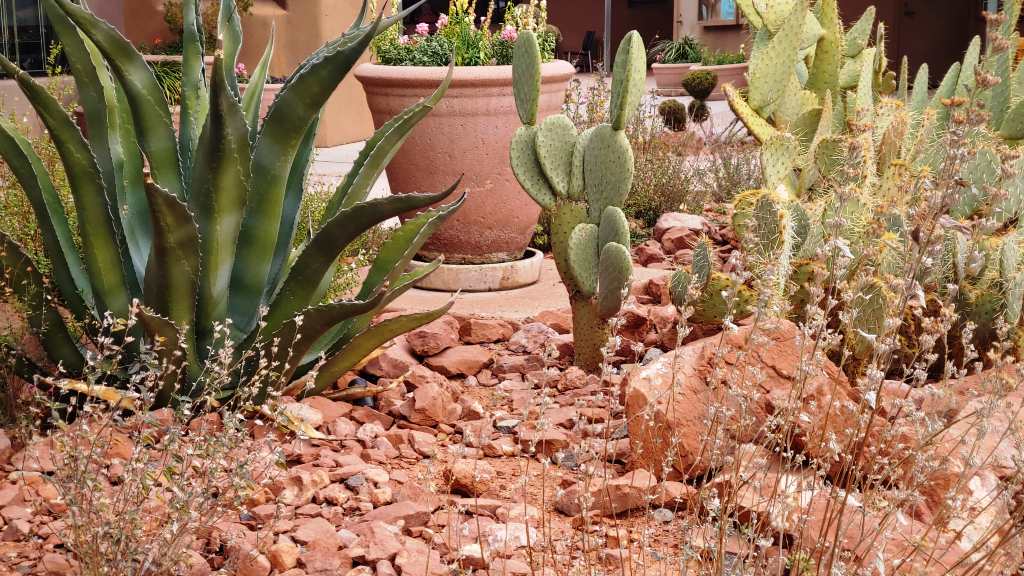
mainstreetlawn
Desert Shrubs for Landscaping in Texas
Regardless of where you live in Texas, you can still introduce desert shrubs to your landscaping. As long as you’re planting shrubs which can withstand winter temperatures, don’t hesitate to install these desert plants when landscaping your north Dallas home. One of the most exciting aspects of desert shrubs for landscaping in Texas is their requirement for little to no water.
We have included a list of some of our favorite desert landscaping shrubs suitable for Texas climates.
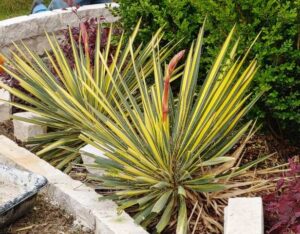
Yucca “Color Guard”
There are many varieties of Yucca to consider when looking for desert landscaping. One of our favorites is the Color Guard.
Given its variegated blade of green and yellow, the Yucca “Color Guard” really stands out in any landscaping. While the Yucca “Color Guard” can withstand some shade, it really prefers full sun.
The “Color Guard” is the perfect accent plant when you’re looking for a small specimen as it reaches only 2 feet tall and wide at maturity. One of the great rewards for taking good care of your Yucca “Color Guard” will be the enormous 3-5 foot blooms that will look great along side other flowering summer plants. Don’t be alarmed if a few summers pass with no flower, some yuccas take between 3-5 years before they bloom. However, it’s worth the wait.
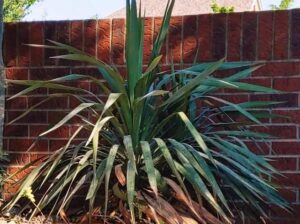
Yucca “Soft Leaf”
Also known as Yucca Gloriosa, Weeping Yucca or Pendulous Yucca, the Yucca “Soft Leaf” is so named because rather than growing spear-like foliage, the fronds of the Yucca “Softleaf” actually flop over, giving it a much softer appearance. Similar to the Yucca “Color Guard”, after a few years, the Yucca “Softleaf” will also grow a large 3-5 foot white flower in the summer.
Happiest in full sun, the Yucca “Softleaf” can command a prominent spot in your traditional garden bed or any rock landscaping garden. The growth habit of the Yucca “Soft Leaf” is approximately 4 feet in both height and width.
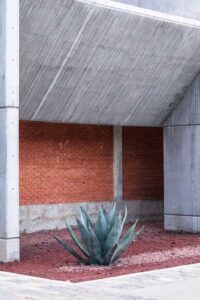
Agave “Whale’s Tongue”
One of the most iconic desert plants is the Agave. The Agave “Whale’s Tongue” can withstand temperatures down to -10 degrees Fahrenheit. This cold tolerance makes it a wonderful desert plant throughout Texas.
Named for its enormously wide fronds, the Agave “Whale’s Tongue” grows to a height of 3 feet and a spread of 4 feet. Given the spikes along the fronds, definitely give the Agave “Whale’s Tongue” some room in your garden.
Agave plants do bloom, but don’t be a big hurry to see the 10-12 foot green and yellow flower. Because the Agave plant is monocarpic, it will only bloom when it’s ready to die…but what a spectacular way to go out.
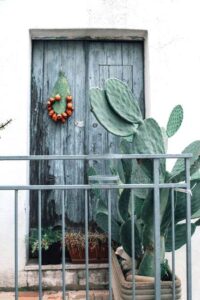
Smooth Prickly Pear Cactus
You will definitely find many cactus growing in a Texas landscape. Unfortunately, there are only a few varieties that successfully survive the colder winter climates. The Smooth Prickly Pear Cactus (botanical name: opuntia ellisiana)is cold tolerant between zones 6-10, meaning that it can survive temperatures down to -10 degrees Fahrenheit. Given that, you may still need a way to protect these and other north Texas plants from frost.
The added attraction of the Smooth Prickly Pear Cactus is that it doesn’t have the spikes/spines of a traditional cactus plant. The smooth or spineless quality makes it the perfect desert specimen plant for any garden landscape. Given the growth habit of up to 5 feet in height and 4 feet in width, you will definitely need to allow some room in your garden for the Smooth Prickly Pear Cactus.
The Smooth Prickly Pear is also entirely edible. The pad of the cactus is actually a vegetable, the yellow flowers can be added to any salad and the summer growing fruit can also be consumed.
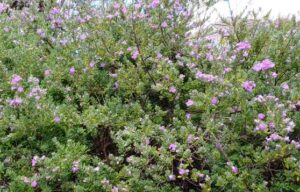
Texas Sage
One of the most popular evergreen shrubs to landscape with in desert climates, the Texas Sage will stand out in any garden with silvery/gray foliage and gorgeous violet blooms throughout the summer.
Growing easily to a height and width of 4 feet, the Texas Sage loves the sun and is incredibly drought-tolerant. In addition, this landscaping shrub attracts birds, butterflies and hummingbirds.
With a wide variety of desert shrubs available for landscaping in Texas, don’t hesitate to add these desert bushes to your landscaping plans. The two things that will make your desert landscaping the most successful will be 1) ensuring the variety of plant selected is cold hardy for your local winter climate and 2) respecting the minimal water needs of these plants by never overwatering.
Share this post
© 2024 · Main Street Lawn Care and Landscaping, LLC

